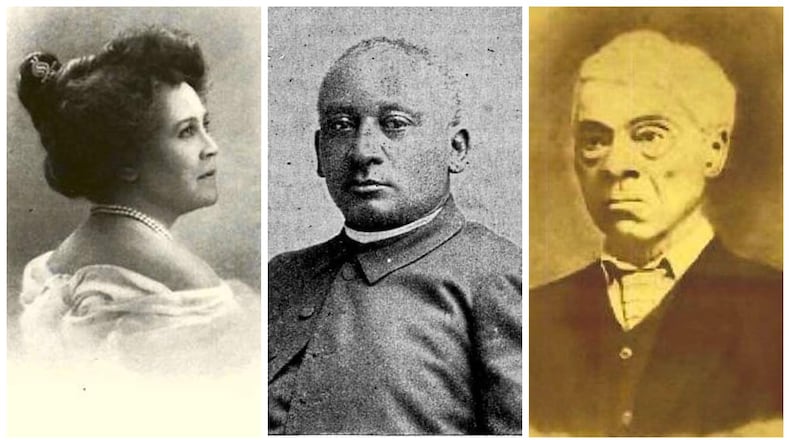The exhibit opened in-person in 2019, but the county decided to bring it back virtually because the archives can only be open for one person at a time due to COVID restrictions. A former Greene County Archives intern, Amy Czubak, did the research and put the exhibit together.
“Because it’s black history month and it was such a good exhibit, we thought we would highlight it once again,” said Greene County Archives records manager and archivist Robin Heise. “The whole idea behind this exhibit is to celebrate Black history in Greene County and the people who really were instrumental in settling around Wilberforce, creating Wilberforce University and Greene County really played a large role.”
Also this month, on Feb. 24 the archives will make a presentation via Zoom called “Finding Freedom in Greene County.”
Wheeling Gaunt
Wheeling Gaunt, who was born a slave in Kentucky, came to Yellow Springs around 1860. Gaunt bought his freedom and his family’s freedom.
Gaunt owned a lot of real estate in the Yellow Springs area and near Xenia. He left part of his estate to Wilberforce University on his death.
He also left some of the land he owned in Yellow Springs to the village of Yellow Springs when he died with the stipulation that Yellow Springs was to rent the land out and the rent collected on the land was to be used each year at Christmas time to purchase flour for the local widows regardless of their ethnicity. Today the 11-acre farm is known as Gaunt Park and is used for community activities — an outdoor pool, playground, a ball park and a hill popular for sledding.
“He wanted to make sure that they were taken care of. That tradition actually still continues today,” Heise said. “They’ve expanded it today to add sugar, and it also covers widowers in addition to widows, so it’s a really cool tradition that still continues. He was a genius. Real estate was his thing. And he was able to become a very, very influential and prominent man here in Greene County.”
Today the tradition is called “The Christmas Flour.”
Benjamin Arnett
Benjamin Arnett played a huge role in Wilberforce history, Heise said.
Arnett was born in Pennsylvania.
Arnett served in the Ohio House of Representatives and led the successful effort to repeal the state’s remaining “Black Laws.” In the Legislature, Arnett won support for Wilberforce in the form of a state facility on campus. He served in the Ohio House of Representatives from 1886 to 1887.
He was a bishop in the AME church and lived at Wilberforce.
Arnett Hall at Wilberforce University was named for him and he is buried in the Wilberforce cemetery.
Hallie Q. Brown
Hallie Q. Brown was born to former slaves. Her father bought their freedom. The family moved to Canada and then Greene County. Brown went to Wilberforce, graduated and began teaching all over the U.S.
“She was dedicated to the advancement of African Americans,” Heise said. “She even at one point went overseas and spoke with the Queen of England. She would travel around the world and give these wonderful speeches and talks. For that time period, to think that she as a woman, as a Black woman, was able to do these things is incredible.”
When Xenia had an opera house, Brown gave many talks there, Heise said.
Brown was a founder of the Colored Woman’s League of Washington, D.C., which in 1894 merged into the National Association of Colored Women.
She was president of the Ohio State Federation of Colored Women’s Clubs from 1905 until 1912, and of the National Association of Colored Women from 1920 until 1924. She spoke at the Republican National Convention in 1924 and later directed campaign work among African-American women for President Calvin Coolidge.
Brown died on September 16, 1949, in Wilberforce, Ohio, and is buried at Massies Creek Cemetery in Cedarville.
About the Author


